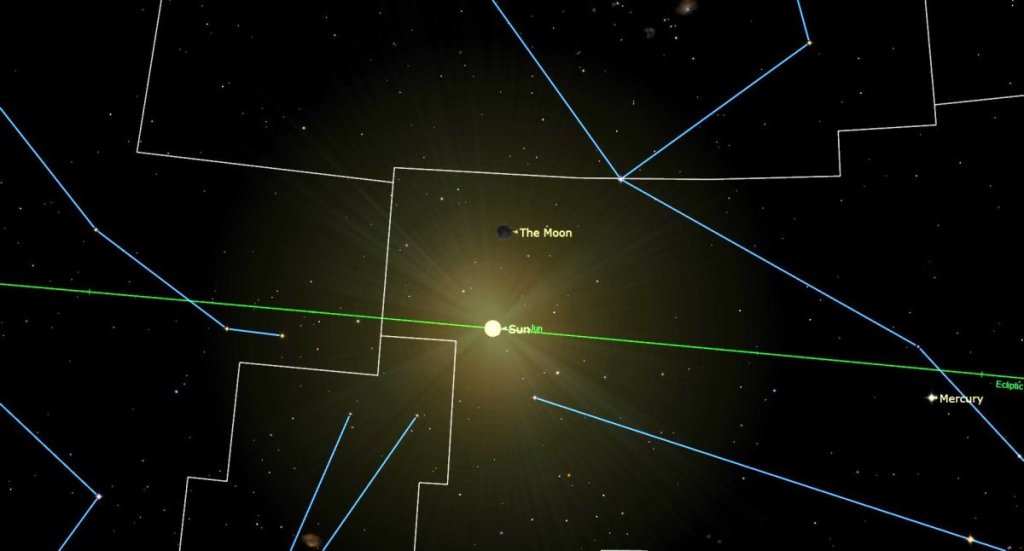
Use the dark new moon of June to see 5 visible planets in the sky tonight (Image Credit: Space.com)
The new moon rises tonight, just in time for Father’s day.
The new moon phase officially occurs on June 18 at 12:38 a.m. EDT (0438 GMT), according to In-The-Sky.org. The new moon is often referred to as the invisible phase because the moon’s illuminated side faces toward the sun and, as a result, is not visible to us here on Earth.
While for skywatchers, a new moon means there is no moon to “see,” many cultures view this lunar phase as a fresh start or new beginning because the new moon marks the start of a new lunar cycle.
Related: Full moon calendar 2023: When to see the next full moon

Want to get a good look at the planets in the night sky? We recommend the Celestron Astro Fi 102 as the top pick in our best beginner’s telescope guide.
The new moon is the first of four phases each month, as the moon takes 29.5 days to orbit Earth. During the new moon phase, the moon is in line with the sun, and the sun and Earth are on opposite sides of the moon. As a result, the moon appears to blend in with the dark night sky.
While you won’t be able to see the moon tonight, you will be able to see dimmer celestial objects like planets and stars that would otherwise be overshadowed by the bright moonlight. In fact, skywatchers will be treated to a planet parade this weekend as Saturn, Neptune, Jupiter, Uranus and Mercury line up a few hours before sunrise on June 18, just after the new moon.

Just note that some of these planets are difficult to observe, even with a telescope. As EarthSky notes, Uranus can be tricky to spot even with dark skies. Mercury, meanwhile, rises low in the east just prior to sunrise, meaning not only will the sun’s glare make it difficult, but it can also be dangerous to point optics in the direction of the rising sun.
Sunday’s new moon is the last of the spring season, as summer officially begins in the Northern Hemisphere a few days later with the solstice (and longest day of the year) on June 21. By this time, skywatchers should be able to see a sliver of the moon as it peeks out from the sun’s glare.
In preparation for stargazing this summer, check out our guides for the best telescopes and best binoculars for spotting celestial objects in the night sky. And for astrophotographers, we’ve also shared our picks for the best cameras for astrophotography and best lenses for astrophotography.
Editor’s Note: If you snap an image of the new moon or planetary alignment and would like to share it with Space.com’s readers, send your photo(s), comments, and your name and location to spacephotos@space.com.





